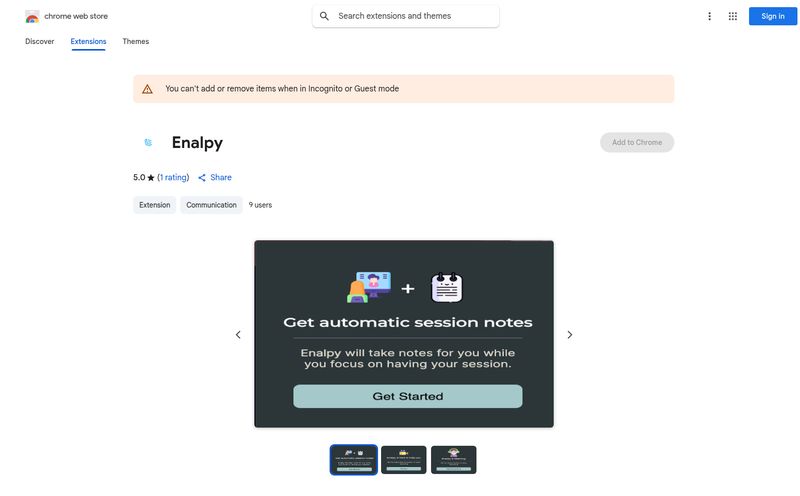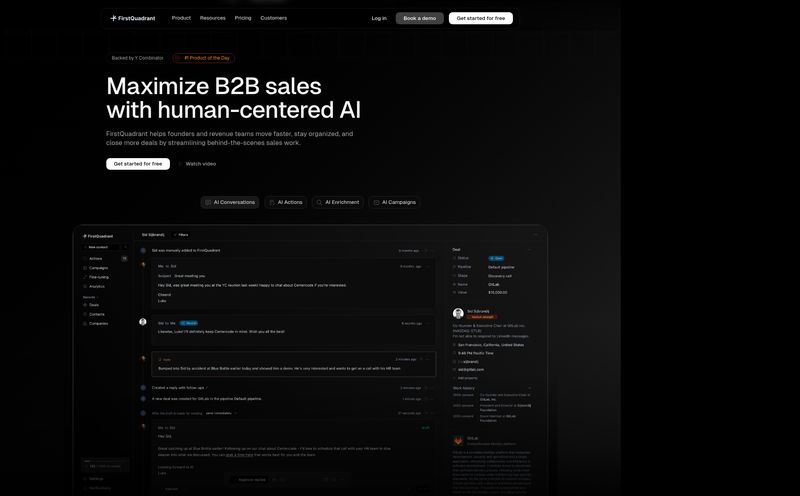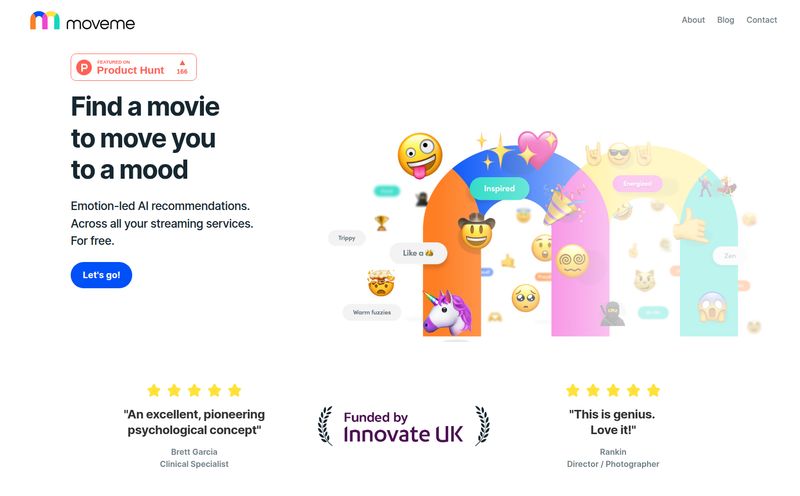For years, the promise of AI in banking has felt… well, a little underwhelming. We were sold a vision of futuristic, personalized service, but what we mostly got were slightly clumsy chatbots that could handle a password reset or tell you the bank's hours. You know the ones. They're fine, I guess. But revolutionary? Not quite.
But I've been noticing a shift lately. The conversation is moving beyond simple Q&A. We're at what the folks at a company called Kasisto call a "turning point." And the new buzzword on the block is "Agentic AI." It’s a term that sounds a bit like jargon, I know, but stick with me. This is where things get genuinely interesting for banks, credit unions, and frankly, anyone with a bank account.
I’ve been tracking the AI space for years, and the jump from conversational AI to agentic AI feels like the difference between teaching a parrot to talk and hiring a world-class personal assistant. One repeats what it hears; the other anticipates your needs and gets things done. Kasisto is playing right in the heart of this new, more active, financial AI space.
So, What Exactly is Kasisto's Agentic AI?
At its core, Kasisto provides an AI platform designed specifically for the nuts and bolts of finance. We're talking banks, credit unions, and other financial institutions. But this isn't just another chatbot builder. The "agentic" part means the AI is designed to perform tasks, orchestrate workflows, and make intelligent decisions—not just spit back pre-programmed answers.
Think of it this way. A standard chatbot can answer, "What's my checking account balance?" An agentic AI from Kasisto might respond, "Your checking balance is $150. I see you have a $200 car payment scheduled to go out tomorrow. Would you like me to transfer $50 from your savings to avoid an overdraft fee?"
See the difference? It's proactive. It's predictive. It takes intelligent action.
The platform itself is broken down into a few key components, like KAI Answers for employees, AI Agents for specific tasks, and their KAI-GPT, which is their flavor of generative AI—but with a critical twist we’ll get to later.

Visit Kasisto
The "Secret Sauce": What Makes Kasisto Different?
Okay, so lots of companies are talking a big game about AI. What makes Kasisto stand out from the noise? From my analysis, it boils down to a few core ideas that they seem to be executing really well.
KAIgentics: Personalization That Actually Feels Personal
This is their branded term for "Behavioral Personalization at Scale." And it's a big deal. Most bank personalization is surface-level. You bought coffee, so here's an ad for a coffee shop. Yawn. KAIgentics aims to understand the patterns of your financial life. It analyzes your real behavior—cash flow, spending habits, savings goals—to build a dynamic profile of you. This means the AI can offer advice and products that are genuinely relevant to your situation, right now. It adapts as your life changes, which is something I wish my own bank's app would figure out.
More Than One Agent on the Job
This is a concept I really love. Instead of one monolithic AI trying to be a jack-of-all-trades, Kasisto uses a team of specialized AIs that work together. Imagine a pit crew at a Formula 1 race. You don't have one person changing all four tires, refueling the car, and adjusting the aerodynamics. You have specialists. Kasisto's approach is similar. There might be an agent that excels at fraud detection, another for handling complex transfers, and a third for answering questions about mortgage rates. They collaborate behind the scenes to solve the user's problem seamlessly. It’s a much more robust and scalable approach than trying to build a single, all-knowing AI brain.
Zero Hallucinations? A Bold Claim in the Age of GPT
Anyone who's played with ChatGPT knows that large language models can sometimes… well, they make stuff up. In the AI world, these are called "hallucinations." While it can be funny when you're asking for a poem about a cat, it's a catastrophic failure if a banking AI hallucinates an account balance or gives incorrect advice about regulations. Kasisto claims its platform is a "zero-hallucination" environment. This is probably their most important feature for the finance industry. They achieve this by grounding their AI in the institution's verified data, documents, and knowledge bases, ensuring the AI is always pulling from a single source of truth. For a highly-regulated industry like banking, this isn't just a nice-to-have; it's everything.
The Real-World Impact: Growing Revenue and Slashing Costs
This all sounds great technologically, but what about the bottom line? This is where the rubber meets the road. Kasisto's value proposition is two-sided: improving the customer experience to grow revenue and empowering employees to cut operational costs.
On the customer side, it’s about moving from transactional to relational. The predictive journeys and proactive engagement we talked about lead to higher trust and more opportunities for cross-selling and up-selling relevant products. You're not just a number in a database; the bank actually seems to understand you. That's how you win loyalty in a digital-first world.
Internally, the impact is just as significant. Think of a call center employee trying to find the answer to a complex, multi-part customer question about international wire transfer limits and fees. Instead of digging through a clunky intranet or putting the customer on hold to ask a manager, they can just ask KAI Answers. They get a verified, instant answer. This dramatically reduces handle times, improves first-call resolution, and makes employees' jobs easier. And happier employees lead to happier customers. Its a virtuous cycle.
Let's Be Real: The Hurdles and Considerations
Now, I'm a professional, not a cheerleader. No platform is perfect, and it's important to look at this with clear eyes. Based on the nature of this kind of enterprise software, there are a few realities to consider.
"Success with any powerful AI platform, especially in finance, hinges on three things: smart integration, a realistic budget, and high-quality data. Get those right, and you're set up to win. Get them wrong, and you'll just have a very expensive chatbot."
First, integration is required. This isn't a WordPress plugin you install in five minutes. Kasisto needs to be deeply connected with your core banking systems, CRMs, and data repositories to work its magic. That takes time, planning, and technical resources. Second, there's an initial investment. A purpose-built, enterprise-grade AI platform for finance isn't going to be cheap. It’s a strategic investment, not a line item in the marketing budget. Finally, its success depends on your data quality. The old adage 'garbage in, garbage out' has never been more true. The AI is only as smart as the information it can access.
Kasisto Pricing: What's the Investment?
This is the question on every decision-maker's mind. So, how much does Kasisto cost? Well, you won't find a pricing page on their website, and that's by design. This is typical for high-end B2B platforms.
Pricing is almost certainly customized based on the size of the institution, the number of customers or employees using it, the specific products you choose (KAI-GPT, AI Agents, etc.), and the complexity of the implementation. The only way to find out is to contact them and get a demo. This allows them to understand your specific needs before quoting a price, which makes sense for a solution this tailored.
Is Kasisto the Right Move for Your Financial Institution?
In my opinion, Kasisto is for the financial institution that is ready to make a genuine leap forward. It’s for leaders who see AI not just as a defensive tool for cutting call center costs, but as a primary driver of future growth and customer relationships. If you're looking to just check the "we have a chatbot" box, this is probably overkill. But if you're aiming to build a truly intelligent, proactive, and personalized banking experience that can future-proof your institution against disruption... then Kasisto is definitely a name you should be looking into.
Frequently Asked Questions
- What is Agentic AI in banking?
- Agentic AI goes beyond just conversation. It's an AI system that can understand intent, make decisions, and take actions on behalf of the user or employee. It can perform tasks like initiating transfers, analyzing spending to offer advice, or finding complex information, all within a secure banking environment.
- Is Kasisto secure and compliant?
- Yes. Security and regulatory compliance are foundational to Kasisto's platform. It's purpose-built for finance, with features like the "zero-hallucination" capability to ensure information is always accurate and sourced from the bank's own verified data. This is critical for operating in a highly regulated industry.
- Does Kasisto work for small community banks?
- Yes, their site specifically mentions serving everyone from Global Financial Institutions to Community Banks and Credit Unions. The solution is scalable, so it can be adapted to the needs and size of smaller institutions looking to compete with the big players on digital experience.
- How does Kasisto prevent AI "hallucinations"?
- Kasisto's platform is grounded in what's known as a Retrieval-Augmented Generation (RAG) architecture. This means the AI doesn't just generate answers from its general knowledge; it is required to retrieve information directly from the financial institution's own secure, up-to-date knowledge bases and data sources before formulating an answer. This ensures accuracy and prevents it from making things up.
- What's the difference between Kasisto and a standard chatbot?
- A standard chatbot typically follows a script or pulls from a simple Q&A list. Kasisto's Agentic AI is proactive and task-oriented. It understands context, predicts needs based on behavior, and can execute complex multi-step actions, functioning more like a digital assistant than a simple information kiosk.
Final Thoughts
The banking industry is at a crossroads. Sticking with the digital tools of the last decade is a recipe for being left behind. Platforms like Kasisto are showing what's possible when you move from simple conversation to intelligent action. It’s about building experiences that are not only efficient but also empathetic and predictive.
While it requires a real commitment in terms of integration and investment, the potential to redefine customer relationships, empower employees, and create a smarter, more responsive bank is immense. The era of the simple chatbot is over; the era of the financial agent has begun.



